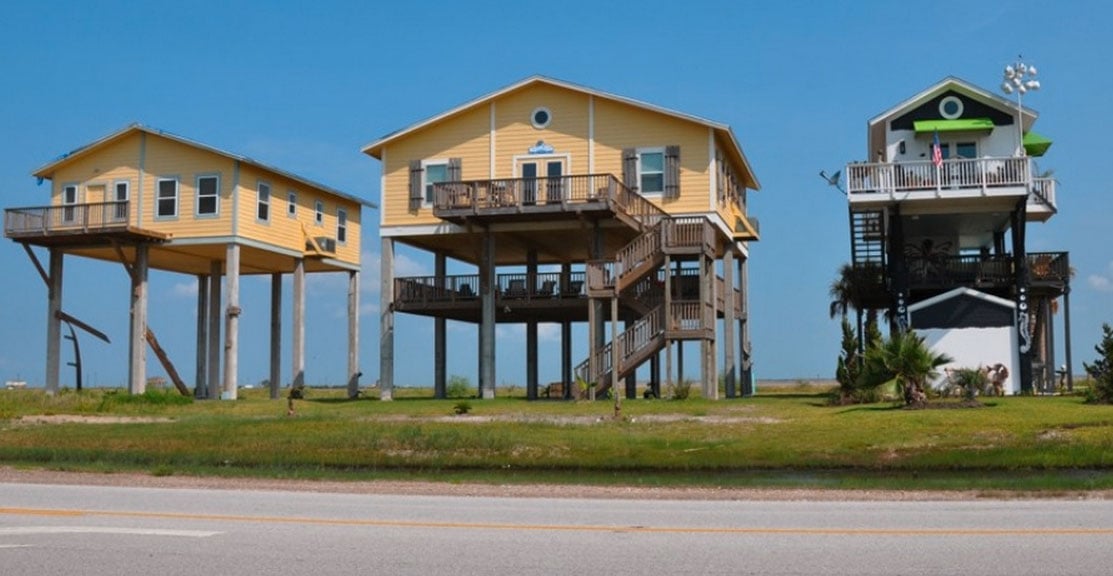Hurricane Matthew served to remind us of the havoc and devastation that can be caused by storm surges to people's properties. The event caused damage estimated to be worth between $4 billion and $6 billion in insurance claims, CoreLogic reports. But while hurricanes always grab the headlines, they're not the only threat to residential and commercial properties along the nation's coastline. Other threats, such as rising sea levels, could be far worse in the long run.

Sea levels are set to rise by around 6 to 16 inches by 2050 according to the Union of Concerned Scientists, which cites climate change as the main cause. And now they're calling on developers to be more creative in their efforts to protect buildings against flooding 3blmedia reports.
One of the most obvious ways to do so is to increase the height of the land for new developments or existing developments along the coast. There are numerous elevated developments in New Orleans for example, in the wake of Hurricane Katrina. In addition, that city also requires new or rehabbed homes in levee-protected areas to be elevated some three feet above grade, or to the FEMA's base flood evaluation, whichever is greater.
In other parts of the country, some developers are pushing the idea of floating developments. These are structures that float on the surface of the water. Floating homes can be attached to the shore or anchored to the sea floor. A home could be designed to rest on an engineered foundation but in the case of a catastrophic flood, it could then float up to 12 feet while anchored to poles. Places like Seattle and Redwood City, Calif., already have floating homes that are popular in its waterfront. But the type of development could be more widespread among other coastlines or even used for hotels, restaurants, and even floating an airport, like what’s occurring in the Netherland’s North Sea.
Finally, some developers are looking at ways to make structures capable of retaining or withstanding stormwater surges. Ideas include more retention areas to capture the excess water from storm surges and heavy rainfall. There's also an increase in the number of "floodable developments" in places like Portland, San Francisco and Seattle, which include swales or contoured ground, rain gardens, wetlands, green roofs and permeable pavements to help protect against storms.
Governments, municipalities, insurance companies and property owners could save BILLIONS PER YEAR if they were encouraged to RETROFIT EXISTING STRUCTURES with AMPHIBIOUS FOUNDATIONS as are well proven in locations around the world. Generally, "any structure which can be elevated" can be retrofitted with such a foundation, often at less than 30% of the cost of elevating it 15 ft. up on many piles. Amphibious foundations are typically built either out of air-tight pontoon forms filled with expanded polystyrene (EPS), or as AIR-TIGHT, reinforced-marine-concrete foundation set within a floodable porous foundation. In contrast to the three very elevated structures pictured in this article, an amphibious foundation and its above structure would permanently “rest” relatively close to ground level. Access would be far easier for the elderly and handicapped, plus it would be far less obtrusive to the eye and the neighborhood and be communicatively much more “neighbor-friendly”. In times of severe flooding, the foundation/structure would gently rise with flood water levels, usually with a built-in vertical range of up to 12 to 18 ft. Though occupancy would not be encouraged during flooding, standardized flexible utility lines and connections would always keep the structure attached to local utilities. In the corners, vertical guiderails, or more attractively, hidden telescoping piles, would prevent any lateral movement. As the flood waters recede, the amphibious foundation and its accompanying DRY structure would gradually return to its original “permanent” footing. Typical storm waves, winds, river currents and tides swings are workable, but locations with very significant, direct ocean waves are not suitable. Local building departments and FEMA can be slow learners and difficult, but selectively they are becoming educated about amphibious foundations and increasingly have blessed such.
To Editor: Please email me any corrections or modifications as I would not want to be associated with anything that was not factually accurate or mislead anyone. Thank you. Scott Holcombe, Urban Waterfront Advisors, Inc.